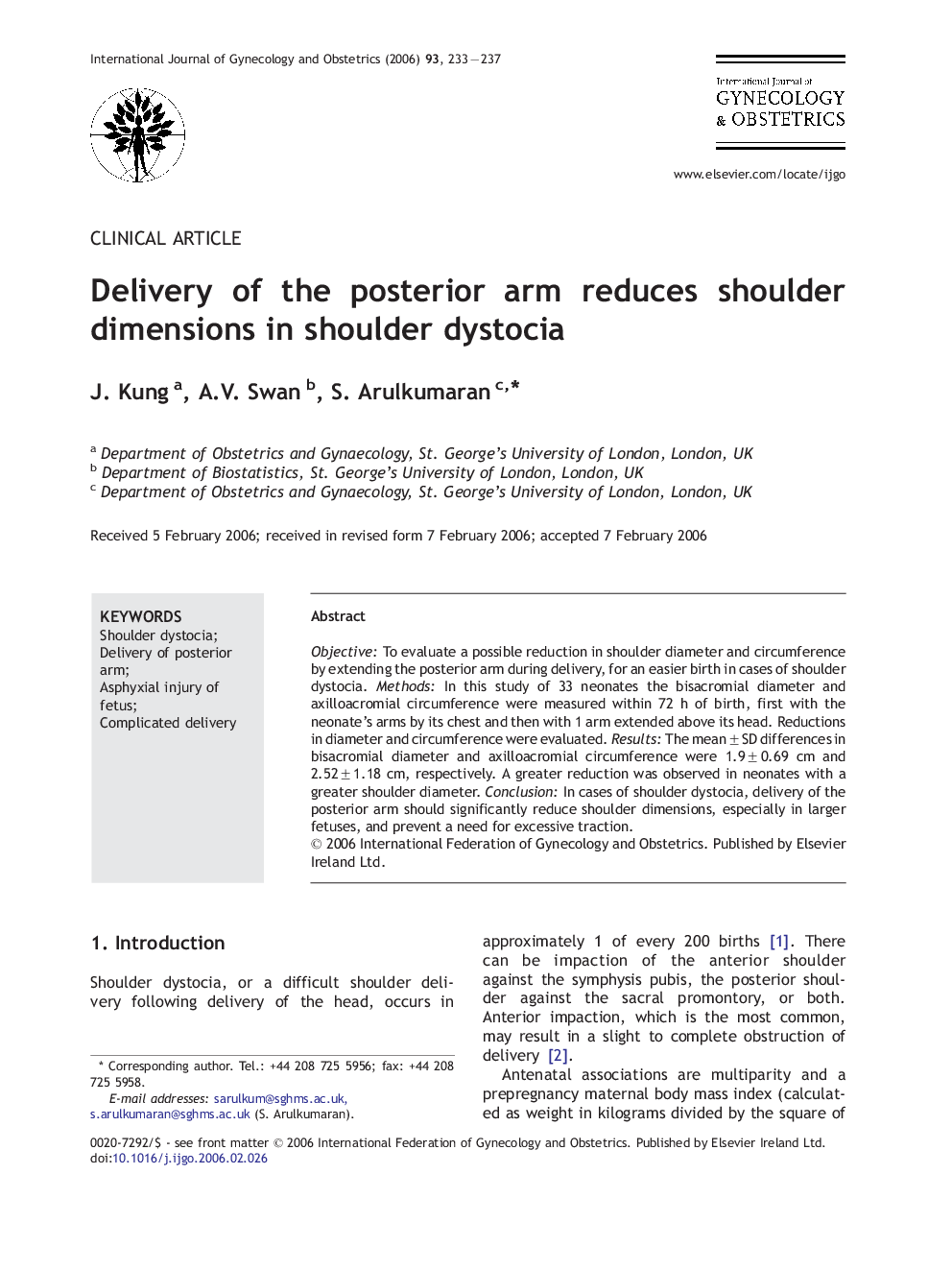| Article ID | Journal | Published Year | Pages | File Type |
|---|---|---|---|---|
| 3952476 | International Journal of Gynecology & Obstetrics | 2006 | 5 Pages |
Objective: To evaluate a possible reduction in shoulder diameter and circumference by extending the posterior arm during delivery, for an easier birth in cases of shoulder dystocia. Methods: In this study of 33 neonates the bisacromial diameter and axilloacromial circumference were measured within 72 h of birth, first with the neonate's arms by its chest and then with 1 arm extended above its head. Reductions in diameter and circumference were evaluated. Results: The mean ± SD differences in bisacromial diameter and axilloacromial circumference were 1.9 ± 0.69 cm and 2.52 ± 1.18 cm, respectively. A greater reduction was observed in neonates with a greater shoulder diameter. Conclusion: In cases of shoulder dystocia, delivery of the posterior arm should significantly reduce shoulder dimensions, especially in larger fetuses, and prevent a need for excessive traction.
